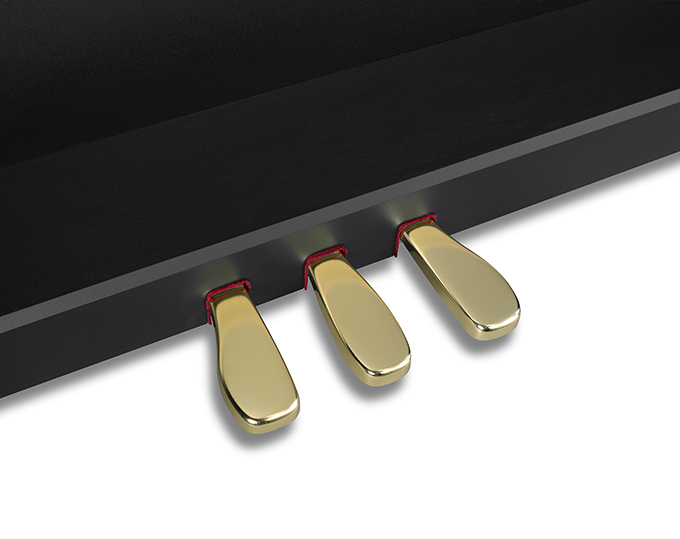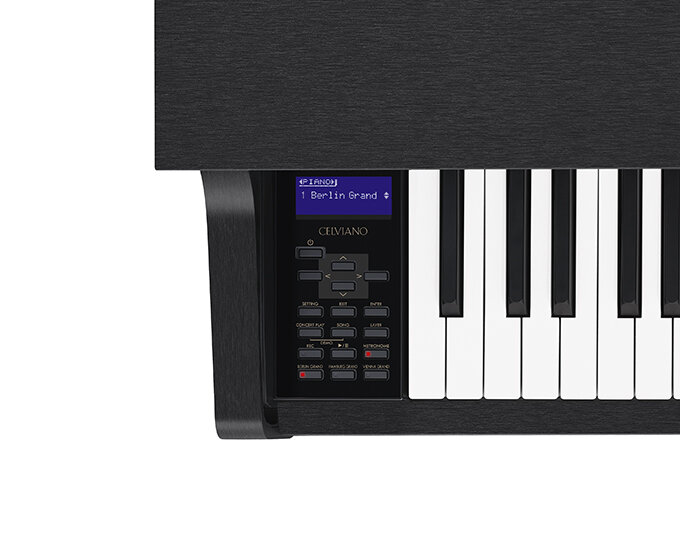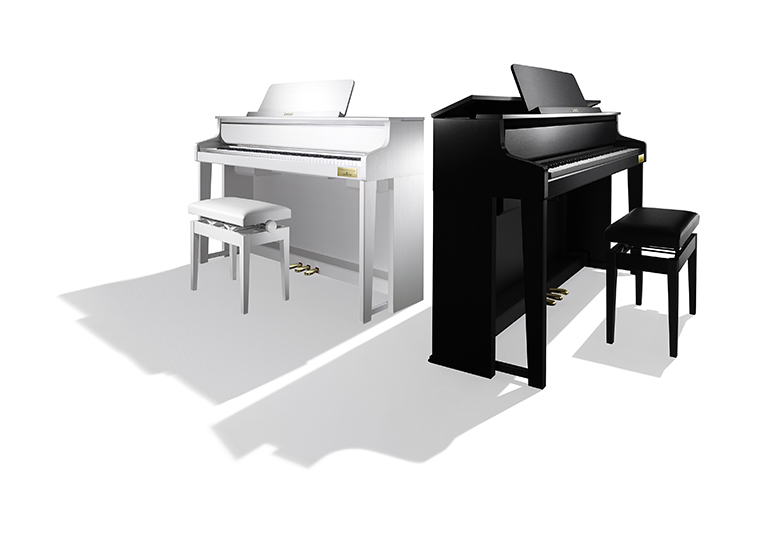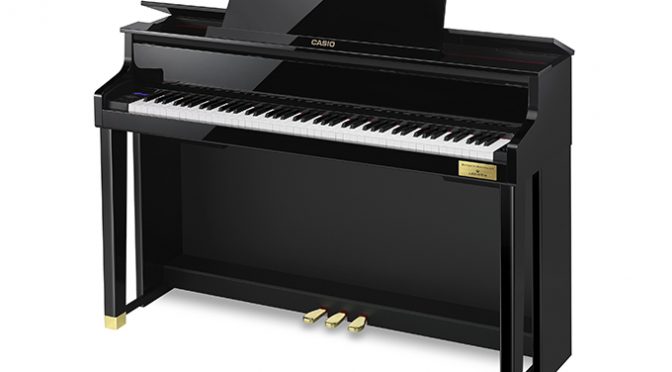Blog | Electronic Musical Instruments | Casio | Electronic Musical Instruments | CASIO
Pianist and music teacher, Chris Stanbury explores the new Casio Grand Hybrid GP-310 and GP-510 models.

When the first series of Casio Grand Hybrid pianos launched amid much excitement in Berlin, September 2015, they took the musical instrument industry by storm. These award-winning hybrid pianos have had rave reviews reviews from day one, and are incredibly popular with pianists and music teachers alike.
What’s A Hybrid Piano?
A hybrid piano is one that has a mix of digital and acoustic piano characteristics. Casio Grand Hybrid pianos use full-length wooden keys and a real moving hammer action (designed by C.Bechstein) but generate sound digitally, meaning that there is no need for tuning and you can plug in headphones for silent practice.
What’s New for 2019?
Four years on, and with a new range of Grand Hybrid pianos due this year, the design team at Casio and Bechstein had an unenviable task: to improve an instrument that was already very well regarded.
So, are the new series of Grand Hybrid pianos worth buying?
The answer to this question is, in my opinion as a music teacher and pianist, an emphatic “Yes!”. As soon as you play the new GP-310 and GP-510 Grand Hybrid pianos, you can tell that these instruments have had a significant upgrade to the previous series.

The new GP-310 and GP-510 Grand Hybrid pianos have some exciting new improvements.
Here’s my top seven improvements that make a big difference to the GP-310 and GP-510:
Volume
Play some loud forte octaves in the lower register of the keyboard and be prepared for more than you bargained for! Casio say that they have used a new speaker design to improve the bass response of these new Grand Hybrids and I think that the overall volume has been boosted too.
Sound Quality
Casio say that all the European piano samples in the new Grand Hybrids are improved. As I have the older GP-300 in my teaching studio at home, I was keen to see if I could tell the difference.
Sure enough, I noticed a big improvement in the richness of the sound when I tried both the GP-310 and GP-510. Apparently this is because the rate at which the sound dies away after you press each key (called “decay”) has been lengthened following customer feedback.

Both GP-310 and GP-510 models now have Action Noise.
Realism
Casio have also added what is known as “Action Noise” to the GP-310. This is the simulated sound of the tiny “thunk” of the key mechanism moving as you play. You wouldn’t think that it makes such a difference, but this small detail reminds me of playing a traditional acoustic grand piano and it’s great to have it as part of the digital recreation.
Both the GP-310 and GP-510 now have Action Noise (which can be varied in volume or even turned off if you wish) and, having played the new models for some time, I really notice that it’s not on my older GP-300.
Touch Precision
I bought my GP-300 piano purely on the strength of the key action. I remember trying it out in my local music store, feeling the wooden keys underneath my fingers and the recoil from the moving hammers and I knew that I just had to own one.
Casio say that they know that the Natural Grand Action is a firm favourite with customers and there was little motivation to change things too much. However, they have reconfigured the sensors on each hammer to allow for a much greater dynamic range. Essentially, this means that the piano will offer more touch sensitivity when playing very softly or very loudly, meaning that you can play with much more expression than on the previous range.

Pedal response
The pedals are such an important part of an acoustic piano, but I’m always surprised at how different they can feel on some digital pianos.
Thankfully, Casio have always provided a reliable pedal action and this is made even better with the new Pedal Simulator, which offers many more levels of sustain and half-pedalling effects.

LCD Screen
A purely cosmetic observation perhaps, but worth sharing nevertheless. The LCD screen colour is now reversed on the new Grand Hybrid series. Instead of black text on a white background, we now have white text on a black background.
This is good, as it improves text clarity and makes for a less distracting screen overall.

Design
At first glance, you’d be forgiven for thinking that very little has changed in this area. I can understand why, as the design of the first Grand Hybrid series ticked all the right boxes: Elegant and compact with a unique opening lid, how could Casio improve this? The answer is in the finish of the materials used and you’ll notice a distinct improvement in the Satin Black finish of the GP-310.
So, are these pianos the best hybrid pianos of 2019?
I was genuinely very impressed with what Casio and Bechstein have achieved with the new Grand Hyrbid series and I would definitely recommend them to pianists and piano students, beginner or advanced. I’ve tried all brands of hybrid piano, and the Casio Grand Hybrids offer the best hammer action and touch response.
If you haven’t tried a Grand Hybrid before, the new series gives you even more reasons to do so and, if like me you’re looking at upgrading your currently model, it’s definitely worth a trip to your local Grand Hybrid retailer soon. Click here to go to Casio’s UK Store Locator.
Explore the 2019 Grand Hybrid Range
